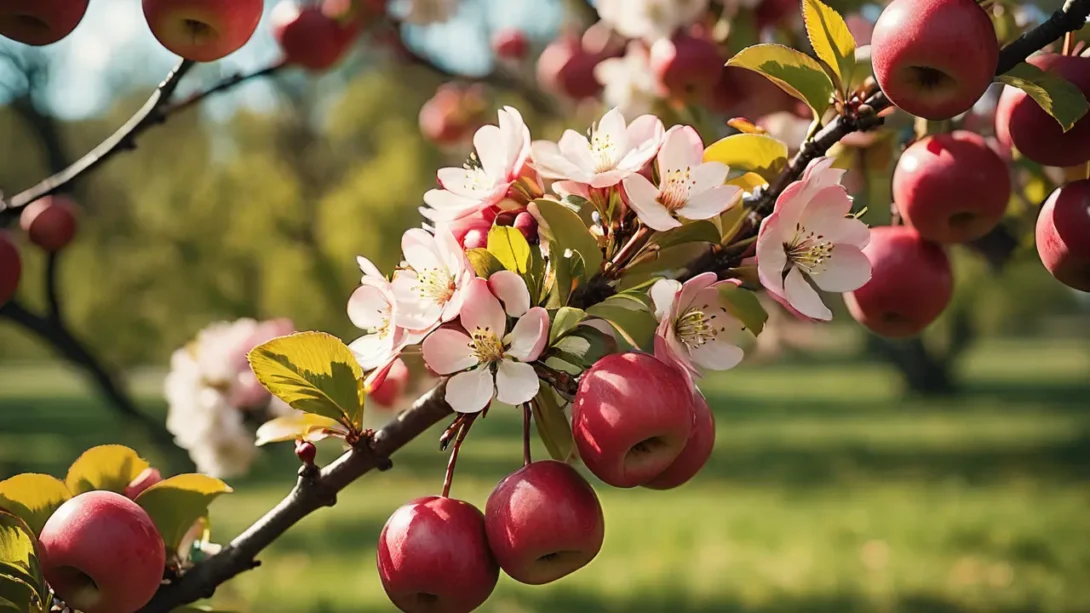Pruning is a crucial aspect of gardening that ensures the health, vitality, and aesthetic appeal of crabapple trees. These ornamental beauties, known for their stunning spring blossoms and colorful fall fruits, require regular maintenance to flourish. Determining the optimal timing for pruning is essential to encourage robust growth, enhance flower production, and maintain the tree’s shape. This guide delves into the specifics of when to prune crabapple trees, offering gardeners insights to keep their trees thriving year after year.
Crabapple Trees
Crabapple trees, belonging to the genus Malus, are valued for their decorative fruit and spectacular floral displays. Varieties range widely in size, flower color, and fruit appearance, catering to diverse landscaping needs. These trees play a dual role in the garden: providing aesthetic appeal and serving as pollinators for apple varieties. Pruning is not merely a cosmetic practice but a vital maintenance routine that removes dead or diseased wood, controls the tree’s shape and size, and enhances sunlight penetration and air circulation within the canopy. Proper pruning practices ensure that crabapple trees remain healthy, vibrant, and well-structured.
Best Time for Pruning
The ideal time to prune crabapple trees is during the late winter or early spring, just before the onset of new growth. This timing is strategic for several reasons. Firstly, the absence of leaves allows for a clear view of the tree’s structure, enabling more precise pruning decisions. Secondly, pruning wounds heal faster as the tree enters its active growth phase, reducing the risk of disease infection. Moreover, cutting back the tree at this time minimizes the impact on flower production since the buds have not yet developed. Late winter or early spring pruning prepares crabapple trees for a vigorous burst of growth and an abundant display of blooms in the coming season.
Exceptions to the Rule
While late winter or early spring is generally the best time to prune, there are exceptions. Immediate pruning may be necessary if you notice damaged, diseased, or dead branches. Removing these as soon as they are identified helps prevent the spread of disease and reduces the risk of injury from falling branches. Additionally, minimal pruning for shaping or size control can be undertaken in summer after the tree has flowered. This approach allows gardeners to manage the tree’s form without significantly impacting its health or floral display. However, it’s crucial to undertake such pruning sparingly and with a clear understanding of the tree’s growth cycle to avoid unintended consequences.
Preparing to Prune
Before embarking on pruning your crabapple tree, selecting the right tools and ensuring they are clean and sharp is crucial. Essential tools include hand pruners for small branches, loppers for medium-sized limbs, and a pruning saw for larger branches. Sanitizing your tools before and after use with a solution of bleach or alcohol can help prevent the spread of diseases between trees.
Equally important is assessing the tree to determine which branches require removal. Start by identifying any dead, diseased, or damaged wood. These are always the first to go. Also, look for branches that cross or rub against each other, as these can cause wounds and open the door to infection. Planning your cuts beforehand can help you achieve a balanced, open canopy that allows light and air to penetrate, promoting healthy growth and reducing the risk of disease.
Pruning Techniques
Pruning crabapple trees effectively requires understanding a few key techniques. The goal is to create a strong, well-shaped tree with good air circulation and light penetration. Here are the steps to follow:
- Thinning Out: Start by removing any inward-growing branches to open up the canopy. This encourages air flow and light penetration, essential for the tree’s health and for fruit development on fruit-bearing varieties.
- Removing Dead or Diseased Wood: Cut back any dead or diseased branches to healthy wood. Make your cuts just above a bud or branch that faces the direction you want new growth to follow. This helps direct the tree’s energy into producing healthy, vigorous branches.
- Shaping the Tree: If you’re pruning for shape, do so sparingly. Remove any branches that detract from the tree’s natural form. Remember, the goal is not to radically alter the tree’s shape but to enhance its natural beauty.
- Cutting Technique: When removing branches, make your cuts at a 45-degree angle about a quarter inch above a bud facing the outside of the tree. This angle encourages water to run off the cut surface, reducing the risk of disease. For larger branches, use the three-cut method to prevent bark tearing: make a notch on the underside of the branch a few inches from the trunk, then cut through the branch from the top down, a few inches out from the first cut, and finally, remove the stub by cutting just outside the branch collar.
Aftercare Following Pruning
After pruning, it’s essential to care for your crabapple tree to ensure it recovers well and enters the growing season in optimal health. Start by applying a thin layer of mulch around the base of the tree to help retain soil moisture and regulate temperature. However, keep the mulch a few inches away from the trunk to prevent moisture buildup that could lead to rot.
Watering the tree, especially if the weather is dry, helps support new growth. Be mindful not to overwater, as crabapple trees do not like soggy roots. Finally, a balanced, slow-release fertilizer applied in early spring can provide the necessary nutrients for healthy growth and flowering. Remember, the goal of aftercare is to support the tree’s recovery and growth following pruning, setting the stage for a beautiful display in the seasons to come.
Conclusion
Pruning is an integral part of maintaining the health, beauty, and longevity of crabapple trees. By adhering to the best practices outlined in this guide, gardeners can ensure their trees are well-prepared to enter the growing season with vigor and vitality. Remember, the optimal time for pruning is late winter or early spring before new growth begins, but certain situations may require attention at other times of the year. By understanding the specific needs of your crabapple tree and employing the right techniques, you can enhance its growth, flower production, and overall structure.
Incorporating pruning into your regular crabapple tree care routine offers numerous benefits. It not only helps in managing the tree’s size and shape but also plays a crucial role in preventing diseases and promoting a lush, bountiful display of flowers. The effort you put into properly pruning your crabapple tree will be rewarded with a healthier, more resilient tree that brings beauty and charm to your garden for years to come.
As you gain experience and confidence in pruning, you’ll find it becomes an enjoyable and rewarding aspect of gardening. Each cut made with understanding and care contributes to the overall well-being of your crabapple tree, enhancing its ability to thrive and flourish. Whether you’re a novice gardener or a seasoned horticulturist, the practice of mindful pruning is a testament to your dedication to the health and beauty of your garden’s inhabitants.
Remember, the key to successful pruning lies in timing, technique, and aftercare. By following the guidelines provided, you’re not just cutting away unwanted branches; you’re shaping the future of your crabapple tree, ensuring it remains a vibrant and vital part of your garden landscape. Embrace the process of pruning as an opportunity to connect with nature, understand your trees better, and contribute to their growth and beauty.



